As a beginner, once you get your head around the basics of smoking food, it just gets easier and more accessible.
Rather than discussing each different smoke technique, this is a beginner guide that covers all the approaches I have learned over the years that you can take at home.
I’ve learned, practiced, and taught people all the different styles possible. Smoking meat isn’t just Low and Slow outdoor baking with wood!
Whether you want to smoke in the kitchen, use your gas grill, kettle grill, or a smoker. I wanted to help people with the simplest and easiest ways to get started. Because BBQ smoking has become so popular, I feel sometimes people have overcomplicated it.
Here is how I break down all the techniques of smoking meat.
- Fast Hot Smoking (How to Hot Smoke Article I Wrote)
- Portable Smokers (Link to More Info I Wrote on Direct Hot Smoking)
- Wok/Pot Smoking with Wood or Tea (Direct Hot Smoking)
- Slow Hot Smoking
- Electric, Gas Hot Smoker, or Using existing Gas Grill (Indirect Hot Smoking)
- Low & Slow Smoking / Dedicated Smokers (Indirect Hot Smoking)

Apple & Grape Wood Smoked ‘Wild’ Pastrami
The basics of smoking meat are the same regardless of the technique (link to how to smoke on a gas grill). Now, most of what I will write is on hot smoking, which is cooking meat with smoke flavor at the same time, pretty simple. The significant differences are what type of fuel system, direct/indirect heat,
I will also briefly mention the easiest meat to smoke and the straightforward smoker’s styles to use. I have written in detail about these in other posts, but I seem to get asked these questions a lot.
Many resources seem to focus on indirect heat charcoal low and slow smoking. This is a popular method, and I do it myself, too. You get a certain smoke flavor from charcoal and wood.
However, for some people, sitting near a smoker for 8-12 hours and managing airflow and heat for a big chunk of meat isn’t realistic.
That’s why I wrote this: to hopefully help you start the journey of smoking your own
Here is a YouTube I made with a summary of smoking options for beginners,
Different Methods of Smoking
Below I will go through the fast and slow smoking methods so you can get a feel for what could work best for you.
Difference Between Fast & Slow Smoking
Fast Hot Smoking = Direct Heat, small smoking chamber & higher temperatures
Slow Hot Smoking = Indirect Heat, can be a large area & lowest possible safe cooking/smoking temperatures.
I just wanted to do an overview of each method. If you want further details, I will link to some more in-depth posts about these different methods.
Fast Hot Smoking – Direct Heat
Process:
- Prepare food – meat with brine
- Add smoke mixture (wood or tea – see below) inside the smoker, wok, or pot
- Heat on high until the smoke starts
- Place meat or food in th
e smoker - Close the lid and turn down th
e heat - Smoke for 5-10 minutes at a lower even temperature
This is where it all started for me many years ago. I still use the portable smoker for fish fillets and even chorizo sausages regularly. Fast smoking is great for small sizes of meat and food. Other stuff I have tried like corn, mushrooms, and many types of sea fish have all come out great.
Portable Smokers – Fast Hot Smoking
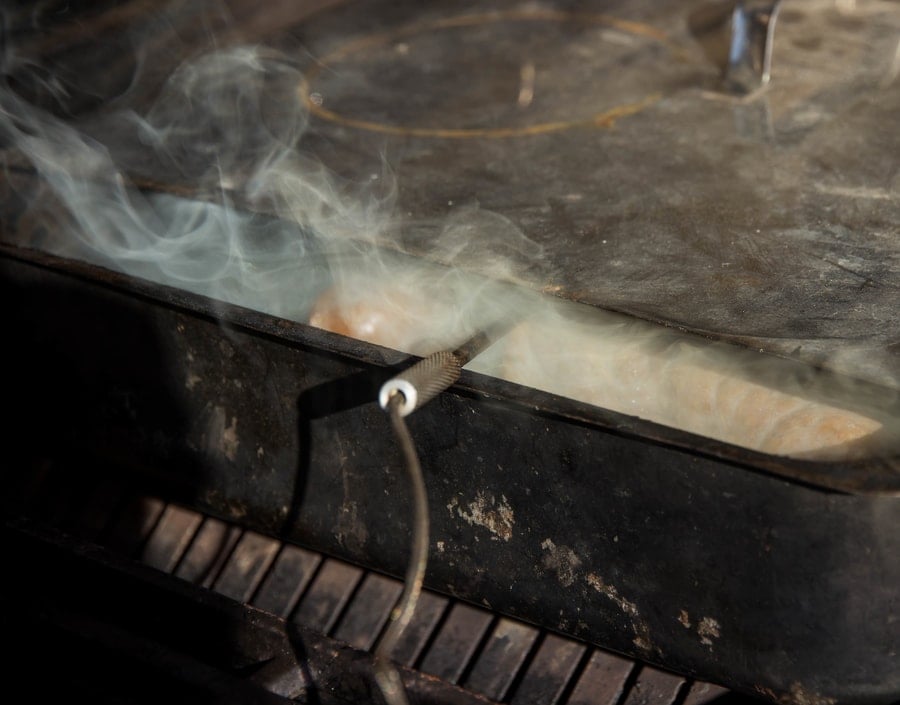
It’s compact which is super useful. My brother bought one for my mum who lives in an apartment. She sometimes smokes on her gas grill sitting on the porch.
It uses direct heat from underneath to combust the wood inside the box, the small metal grill creates a bit of space between the smoking wood and the meat (here are some tools for grilling/smoking I wrote about in detail) or food.
I read in one book that this was called a ‘pressure’ smoker in Scandinavia, but I can’t see how any pressure builds up in these.
The cheaper models don’t have very good seals, I like the 2-piece variety, which is a box with a sliding lid.
You can also find collapsible portable smokers which can be excellent for camping and fishing trips. However, if you are using denatured alcohol as a heat source, it can affect the flavor. Since the burning alcohol will seep through the smoke chamber
I use my portable smoker either directly on a camp propane burner (a bit too direct to narrow the heat), outdoor stand propane burner, or side burner on the gas grill.
If you want a rundown on a few decent portable smokers, I wrote in detail about them here.
The temperature I will generally use in a portable smoker is 230-280°F/110-140°C
Fish like salmon and trout can be cooked/smoked in 7-20 minutes in a portable smoker
Sausages 5-10 minutes
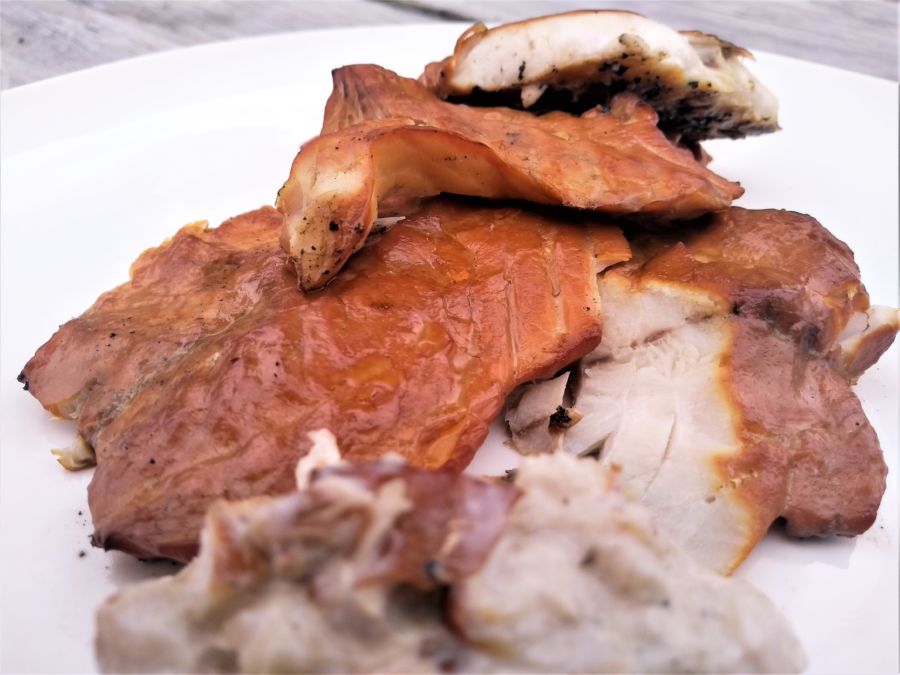
Wok/Pot Tea or Wood Smoking – Fast Smoking
The great thing about this technique is if you want you can do it indoors in the kitchen. As long as you have some form of stovetop heat, you can do this just about anywhere.
You can use the same types of wood as any other smoking project.
The traditional Chinese Wok Smoking is:
Sugar, white rice & tea leaves
Then, sometimes certain aromatics are added, like citrus peel, cinnamon, star anise or cloves.
But you can use wood sawdust or wood chips either just straight wood or mix it with some of the wok smoking ingredients.
As mentioned this tea smoking produces a very different aromatic style of smoking. It is great fun playing around with various blends also.
Here is a picture of the setup. Same as the portable smoker above, you are using direct heat to produce some smoke and then either sitting the meat or food on the tin foil or on a cooling rack above the smoke mixture.
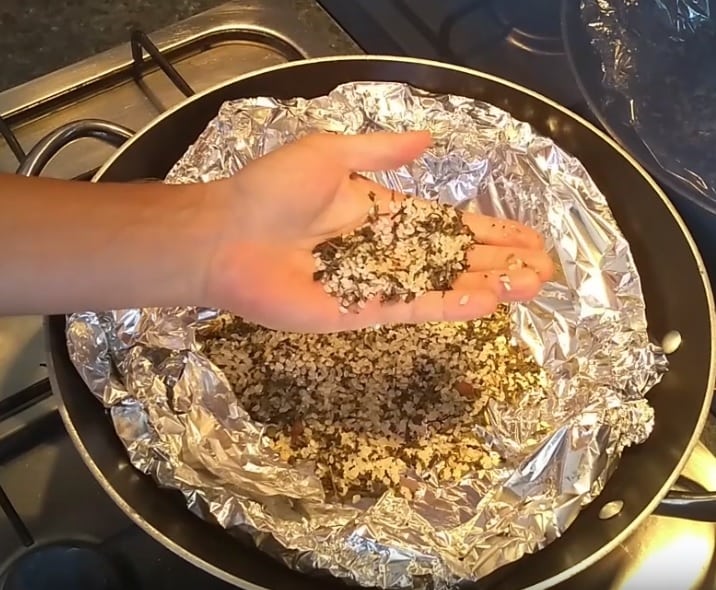
Simple and can be used indoors with some caution.
It may create a fair bit of smoke inside, so have your kitchen extractor fans on maximum.
If you have sensitive smoke alarms, it’s best to disconnect these also.
If you want more details on this style of smoking, please find a full post here.
Slow Hot Smoking
Gas Grill Smoking = add smoke whilst cooking, indirect heat (if you have a hood/lid)
Low & Slow Hot Smoking = dedicated smoker, many Fuel Types, basic (thermostat controlled) & advanced (charcoal fuel)
For any of these gas grill BBQ methods, one thing I have learned on my BBQ and also my friends is that the temperature gauges that are built in can often be inaccurate. It has explained a lot of reasons why the outcomes have sometimes not been what I expected.
The e
Different Methods on a Gas Grill BBQ:
- Foil Pouch
- Metal Smoking Box
- Pellet Tube Smoker / Maze Smoker
- Smoke Generator
Foil Pouch / Metal Box Smoker
An easy trick to get some smoking going on your gas grill BBQ, wrap a little bit of chip woodchip or sawdust in a foil pouch and poke one hole in it.
It can add some light smoke flavor to whatever you have on the grill.
If the foil pouch has nice tight folds on the corners you get a better outcome.
You can also play around with indirect heat. So if you have a 3 burner BBQ, run 1 or 2 burners and keep the food you want to smoke on the unlit burner.
Metal box smoker is the same as the foil pouch, except you have a solid metal box with holes in it. I had a super heavy metal cast iron type, it took ages to heat up. What I wish is that it had a hinge, it’s a bit fiddly trying to take the lid off.
Certain designs make adding wood a lot easier, here is a hinged one I am talking about on Amazon (click here).
Pellet Tube / Maze Smoker
I actually recommend this style a lot, since it is cheap and effective.
You light the pellet tube at one end and just let it smoke (Link to How To) through to the other end, depending on the size I get about 5 hours from a full tube.
Once you have the smoke, all you need is the heat for hot smoking. The method I use is directly from your gas grill, which can be used for indirect hot smoking on the grill or to just add some smoke flavor.
I prefer the 3 or 4-sided tubes because they don’t roll around too much.
Sawdust or pellet can be used for these wee devices, so it gives you a bit more choice about what type of wood size.
Having a decent propane blow torch-style lighter is important to get these gadgets going easily. A normal lighter can take a very long time, especially if it’s windy!
Smoker Generator
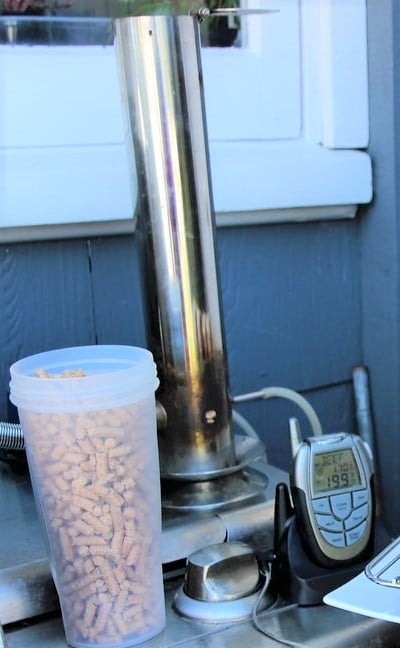
Now here is a toy that really can be used in many different scenarios. The big difference this has over the above other devices is that you can control the airflow, therefore you can adjust how much smoke.
It works on the venturi effect,the smoke inside the tube gets ‘pulled’ into the chamber.
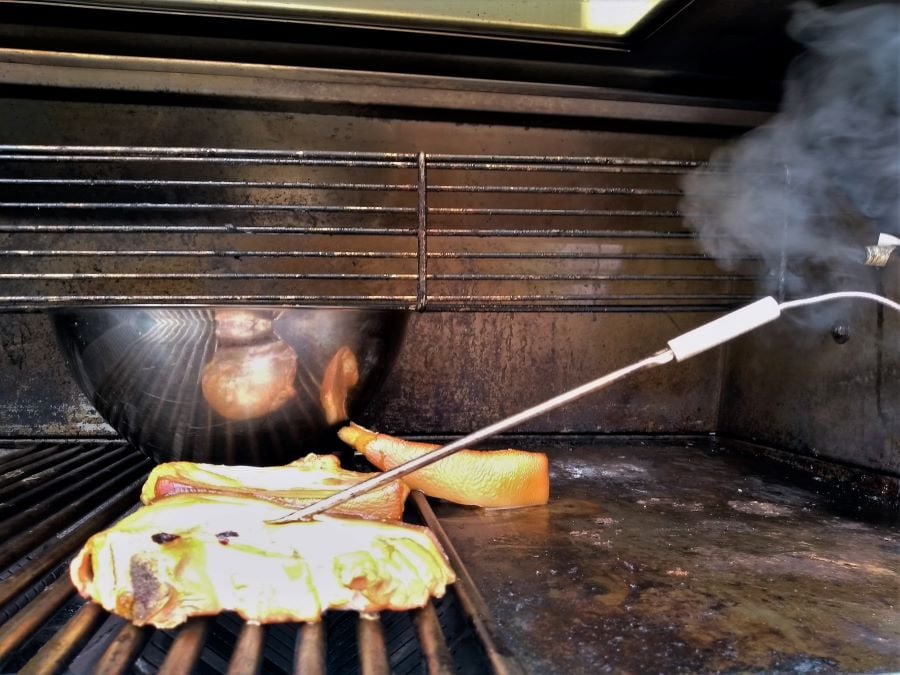
Lastly, the smoker generator got attached to the side of my 5-burner gas grill. The first time I used it, I didn’t put the hot plate below the incoming smoke, so it got pushed out of the grill easily. But the next time, I learned and moved the plates around so the smoke filled the hooded chamber.
Low & Slow BBQ Smoking
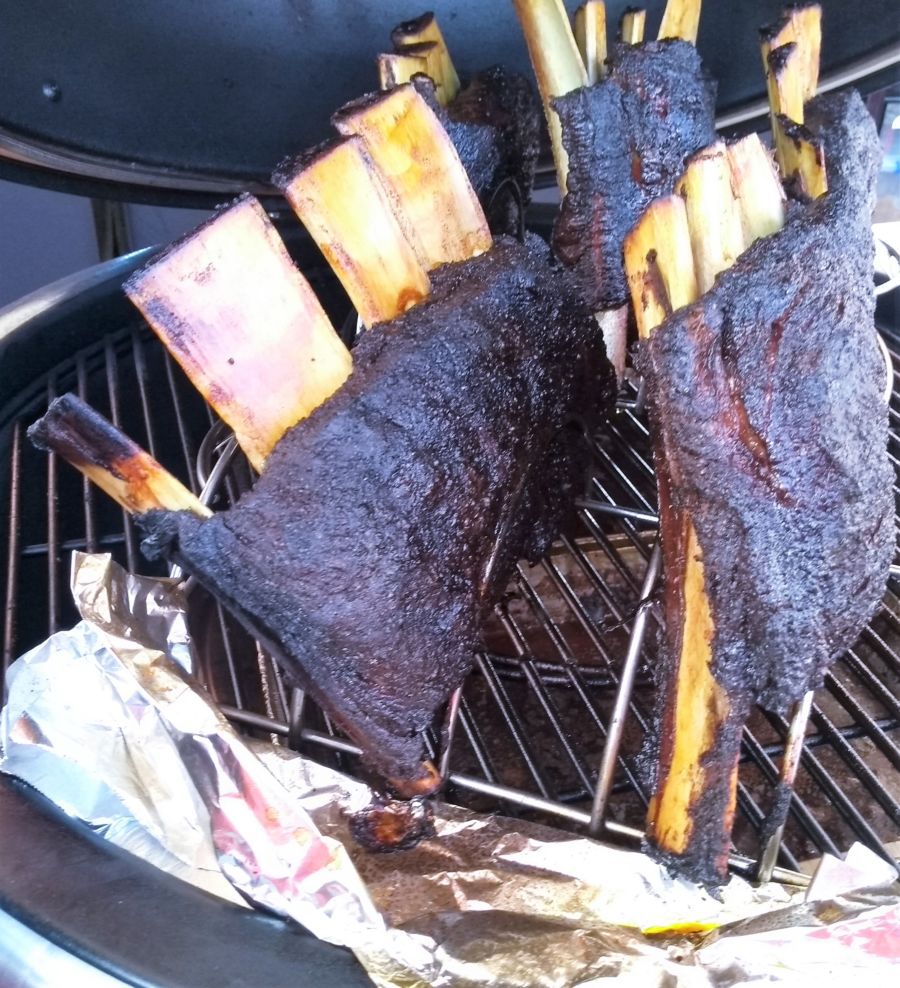
A
Will also cover the easiest way to start this culinary journey as well.
In essence, it’s low-temperature indirect cooking at 200-250°F/95-120°C with smoke for an angle of flavor.
Different Equipment & Styles
Will list the set & forget first and then the more involved smokers at the end.
- Pellet Grill Smoker (Link to Pellet Smoker Test)
- Electric & Gas Smoker
- Kettle BBQ Charcoal Smoker (Link to Cost of Charcoal Smokers)
- Pit Barrel Smoker (Drum Smoker)
- Gravity Fed Smoker & Offset Charcoal Smoker
I have mentioned above what is considered the main smoking devices, there are of course a bunch of customized and one-off categories out there also.
Pellets Grill Smoker
Apart from the need for a bit of power to feed the pellets into the burner.
This is the easiest smoker to use (Link to Post on Easy Smokers to Use). They come with inbuilt thermostat control, which just means you set it and forget it! Well, I wouldn’t forget about it, but the hoppers that hold the pellets are generally quite large. So you won’t have to worry about filling them for 3-5 hours.
Now the Pitmaster purists who enjoy the fire, wood, and airflow management of offset smokers aren’t too keen on this style. In some States where Pitmaster competition occurs, pellet smokers are prohibited.
This is all about beginners or folks who want an easy option.
You can smoke anything in a pellet grill and many of the decent models come with built-in jacks for temperature probes. So you can have a meat probe constantly measuring the internal temperature of your meat.
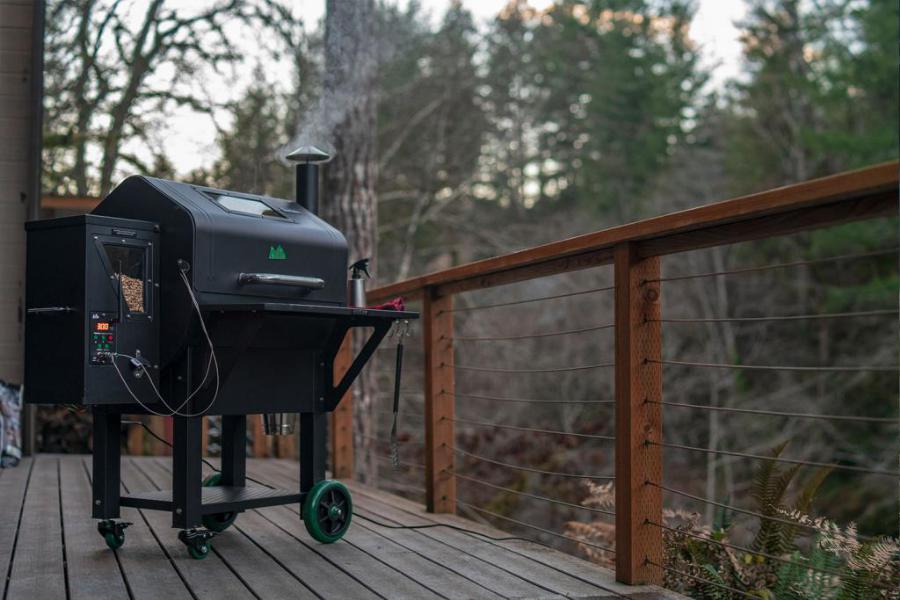
Another big plus of a pellet grill is that you can slide a plate open and have direct heat. So the pellet grill is dual-purpose and also works as a regular gas grill for cooking/searing steaks.
Pellets
Electric & Gas Smokers
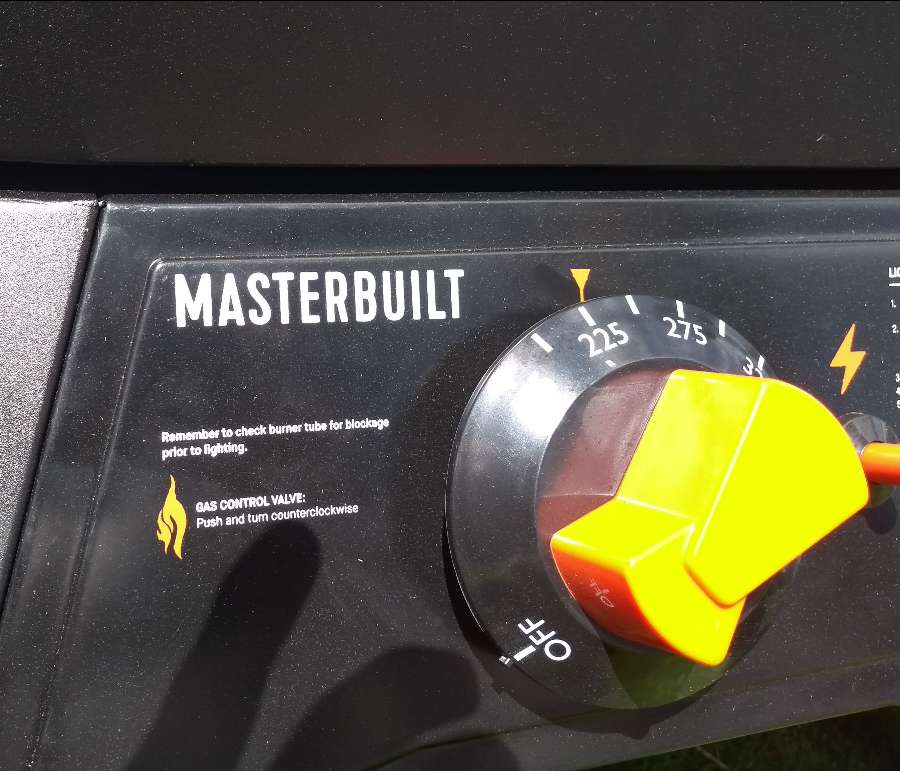
One of the most popular kinds of low and slow smoking that people have.
The other would be the kettle charcoal smoker, which has been around for decades I think (Although low & slow seems to have developed over that time into its category).
Supposedly early settlers combined the low-temperature techniques of Native American Indians, whilst the German early settlers added the vinegar acidity angle that is popular in Texas for instance.
Thermostat-controlled models are very popular. Some aren’t thermostat-controlled, I haven’t used any of those. For
They are also surprisingly light, so you can take them away on holiday depending on the fuel type.
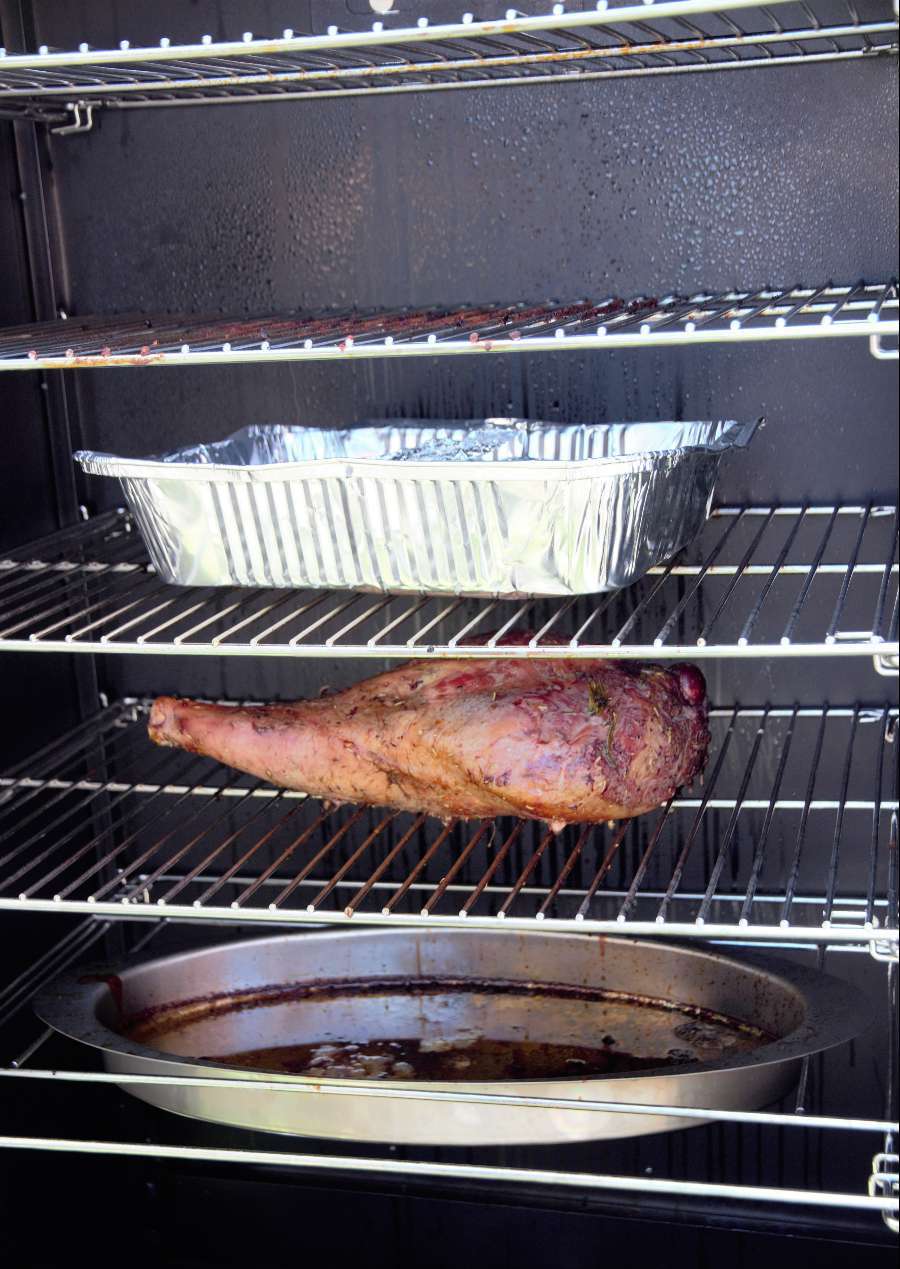
They have a feeding tube that you can access externally, this makes adding some woodchips useful.
Some comments you get are that it doesn’t have the Southern “BBQ” flavor, but if you want you can either add small chunks of charcoal or even charcoal pellets to produce the same flavor.
I have down some reviews of a few electric smokers here, and also a few propane smokers here.
Kettle BBQ Charcoal Smoker

An absolute classic, the Weber kettle is known far and wide in the BBQ community.
It is an incredibly simple design, the key to it working well is the insulation which helps a lot with heat management. Secondly, the airflow control in and out of the chamber. This means when you adjust it, charcoal will get more
Charcoal is an involved process, there are simple ways of making it less time-consuming. Like using a wireless probe so you can just keep an eye on it from a distance.
With charcoal, it’s kind of old school and the obvious thing is you become the thermostat control!
The ‘snake method’ is a great starter option for low & slow. I did this the other day with a pork butt. You line up connecting charcoal pieces in a domino setup, they burn only 2-3 charcoal lumps at a time. So it just slowly goes through the lineup you have created. Then, all you do is sprinkle woodchips or pellets over the top. Wood chunks with some more decent sizes are also good to use.
I have some fruit wood branches, so they got placed on top of the ‘snake’ the other day (above pic).
There is an incredibly popular Weber which is modular
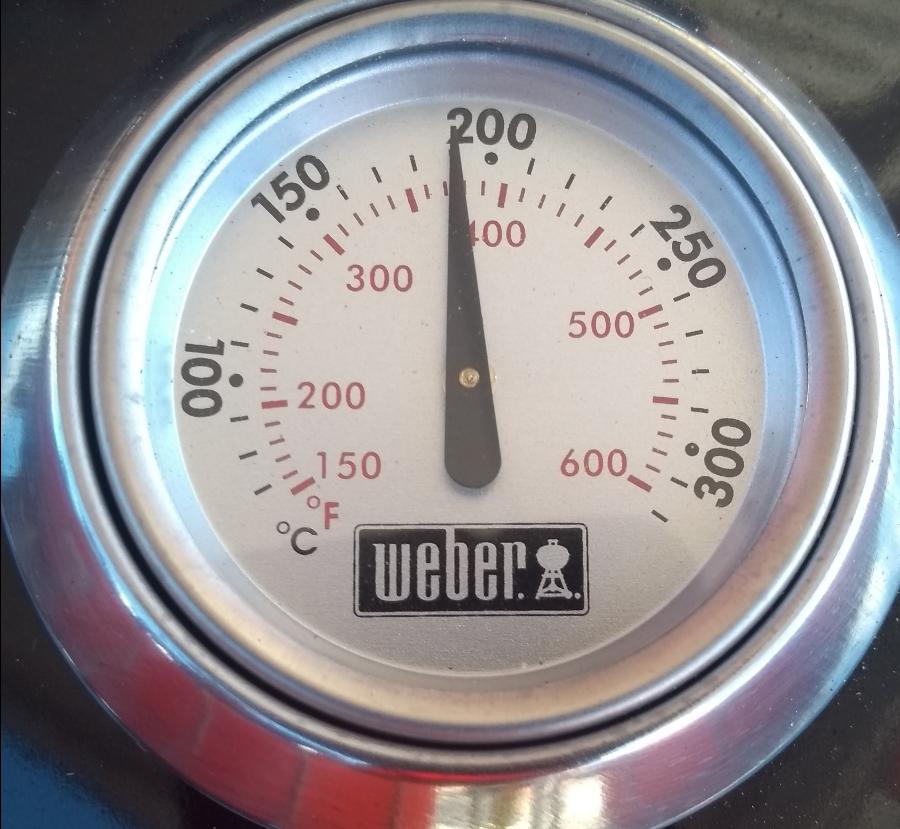
Grill or Smoke
The nice thing about a kettle grill is that you can just have it searing as well. So if you want direct heat, it’s ready to go.
It’s just the time it takes to burn down the charcoal until it is nice and hot white ready for the steak. This is why I only mainly sear my weekday dinners on the gas grill. Click it on and you are away.
Drum Smokers
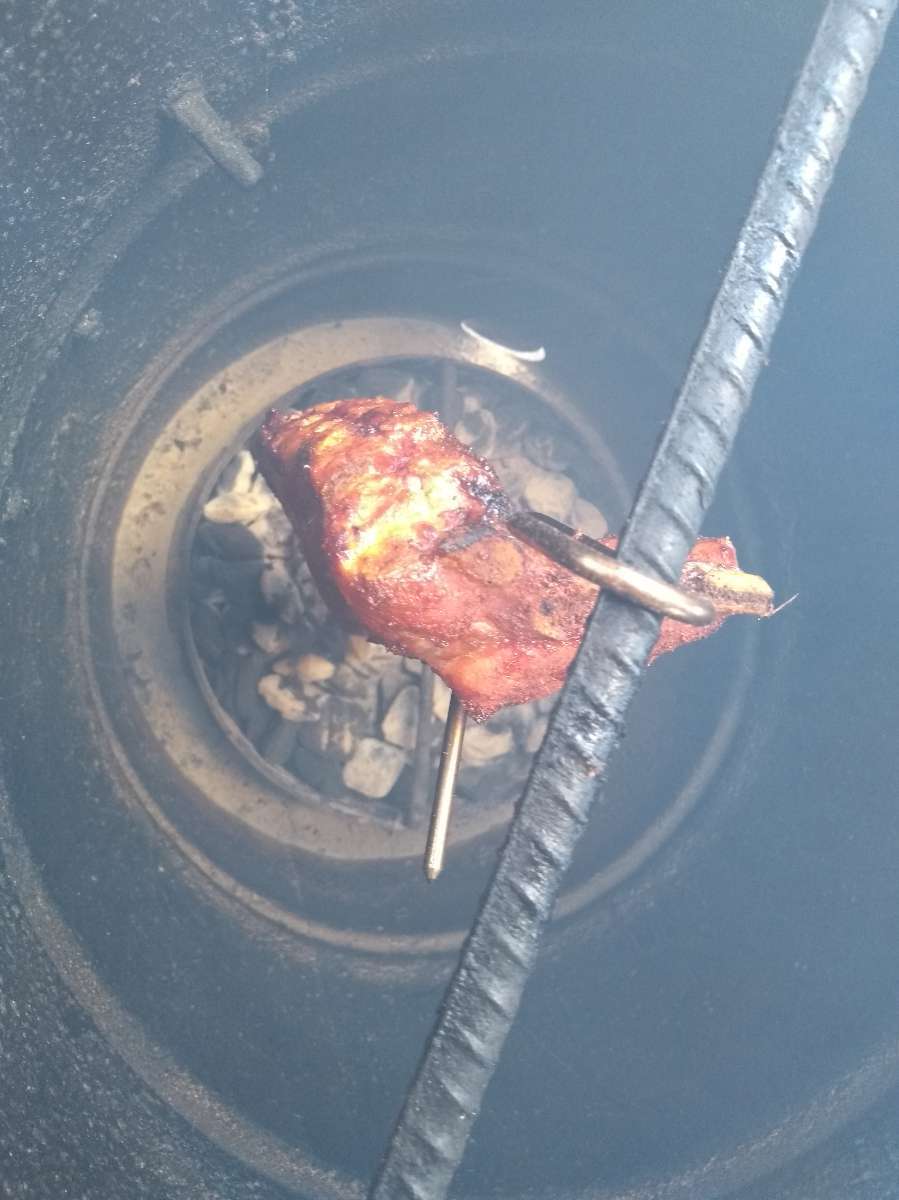
You can DIY build your own or pick these up at a reasonable price. Remembering it’s a drum with a grill in it, so technically the design is quite straightforward.
It is more of a hanging method, but a grill can be used too. Many people completely swear by these too. The idea is the flavor drips down and vaporizes which then flavors
Gravity Fed Smoker & Offset Charcoal Smoker
Now I just wanted to touch on this type of smoker, however, it’s not really for the beginner, since it takes a lot of attention – but if you want to get seriously hands-on, go for it!
It is hands-on and you end up having to adjust airflow to get a consistent temperature. These are types of smokers that are used in competition smoking events.
Easy Smoking Meat Projects for Beginners
For Fast Smoking
Smoked Sausages
This is probably the easiest project today. You can smoke sausages with a portable smoker or a gas grill easily. You don’t need to brine or salt cure the (here is an article about equipment) sausages they will just take on some of the smoke flavors in a portable smoker easily.
On a gas grill, you have many ways to direct or create the smoke. You can use a pellet tube, maze smoker, or even just a chunk of wood on top of the burner.
Fish Fillets
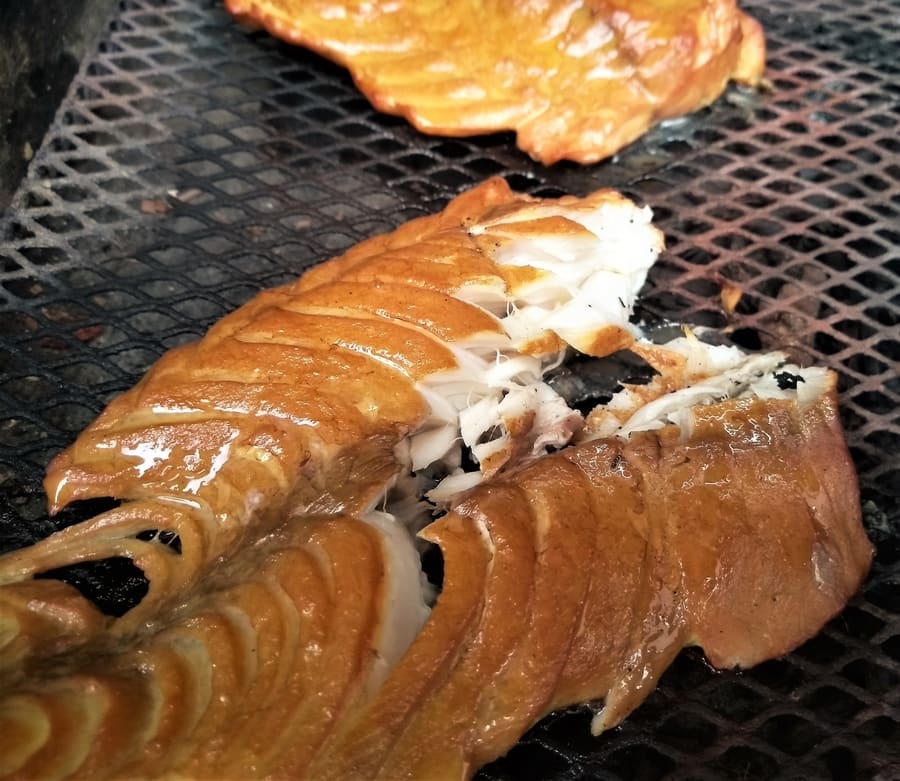
I love to do my fish fillets in a portable smoke, I am generally talking about fish fillets that are less than half an inch thick. When it comes to thicker salmon fillets, I generally will use a low & slow style.
Just 2 to 4 hours in a simple 5% salt brine, then drying the fish out to create the pellicle. I generally dry out the fish for 30 minutes to 60 minutes and then it’s straight into the smoker.
For Slow Smoking
The temperature will always need to be 200-275°F.
The most important thing is to hit the internal temperatures so that you know when the meat is cooked.
Water Pans
For any type of low and slow smoking using a water pan is an excellent idea. I think just about every smoker I have seen, could have some form of water pan (slow smoking not fasting smoking though).
Having the added moisture inside the smoke chamber helps keep the moist smoke curling around the meat.
Beef or pork ribs are pretty small and size compared to beef brisket or pork shoulder. So this can be a good first-time project for low and slow smoking. It could take 3 to 4 hours to complete. Generally, you just use a dry rub and possibly some basting.
Fundamentals of Hot Smoking Meat
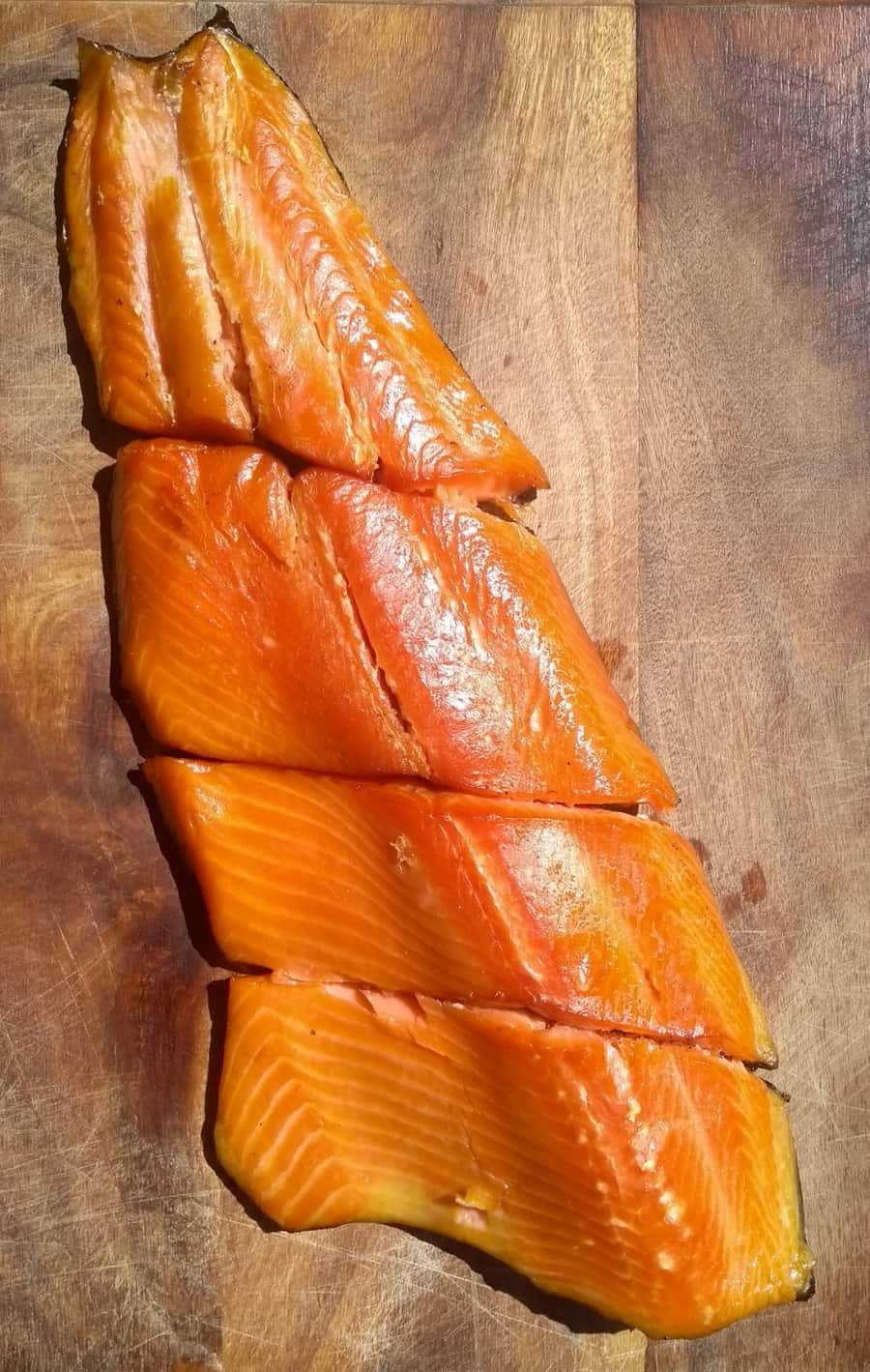
Doesn’t matter which style further on you are using, these are the main aspects of smoking food.
- Meat Quality & Meat Story
- Quality of Smoke & Clean Combustion
- Air Flow
- Temperature Control
- Under Smoking Better than Over Smoking
- Salt Brining or Dry Rubbing
- Meat Thermometers
Meat Quality & Meat Story
It goes without saying if you are going to go all the way, you want to make sure you have excellent meat, which is a great story.
Sometimes, when I am lucky enough to head to the wild and get my meat. I can tell the whole story!
Quality of Smoke & Clean Combustion

When you get the right clean combustion going, regardless of the method, you have transparent ‘thin’ smoke. Sometimes, this is referred to as ‘thin blue smoke’. It happens in other colors, too; I have had yellow thin smoke.
The only method I have used which doesn’t get this is the tea smoking below. The mixture creates a very different flavor and doesn’t resemble wood smoke flavor.
Air Flow
More important for longer smoking sessions, fast smoking, is short, intense smoking. So the airflow is not as relevant, especially using a portable smoker trout smoking link (I call this a direct hot smoker, with the wood and meat in close proximity).
Temperature Control
With all these methods, you will generally turn the heat down (or restrict air flow with charcoal), to slow cooking the meat. This allows the maximum time for the meat to take on the smoked flavor.
Under Smoking Better than Over Smoking
When I started smoking meat, I used to pile in strong wood and wonder why my trout came out bitter. Under smoking is the way to go, so I have talked more about universal sweet light-flavored woods. These will be easier to manage for beginners.
Salt Brining or Dry Rubbing
I’m a big fan of salt brining, either with store-purchased, farm, or wild game this helps in a few ways. Firstly, when immersed in salt, the salt helps retain the moisture of the meat whilst cooking. Very important for leaner meats like fish, venison
Meat Thermometers
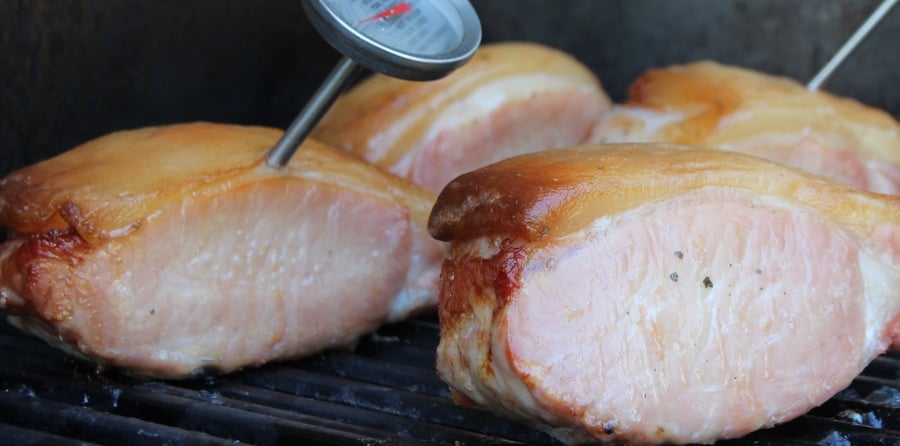
When you start this is not an essential tool, for fast hot smoking it will be used minimally.
However, for the most consistent outcomes, even getting an essential probe thermometer (probe review link) can guide you about your actions. I started off using one cheap wireless thermometer, it was designed to show the internal temperature of the meat, so you know exactly when it is cooked.
I found out that it gives me a reading up to 450°F so I would use it inside my smoker or gas grill to guide me through it, which helped me learn more about how my smoke chamber was working.
BBQ Grilling vs. BBQ Smoking
Grilling is direct heat cooking that is traditionally BBQing meats and foods. BBQ Smoking is generally considered indirect heat (from various sources cooking and smoking wood so the food cooks and gets flavored by smoke at the same time.
Most Useful Smoking Wood for Beginners
Buying smoking wood (I wrote about smoking woods for cured meats here) will make it simple since they aren’t going to sell wood that isn’t meant to be used with food. But, if you are harvesting your wood a few easy rules to use are:
- Only use untreated, pesticide-free wood
- Dry the wood out properly (I have chipped then dried or dried and chipped, and haven’t seen much difference)
Type of Wood for Smoking Food
Hardwood is the way to go, anything that has resin or sap is not suitable and can lead to uneatable food.
Just about every fruitwood can be used for any smoking project. Some of my favorites are Apple, cherry, peach, and grape wood.
“Deciduous” hardwood seems the best option. Deciduous means trees that lose their leaves every year.
So basically, evergreen trees are the ones to stay away from for smoking food.
If you want more information on some of the more universal smoking woods, I wrote a full post here.
I have used a range of woods and have read many opinions about types of wood and their flavors. Some of the specific flavors of the wood, I
The idea of breaking the wood down into the more subtle light flavors and the stronger heavy darker wood flavors is how I look at smoking wood.
Soaking Wood
Through the learning curves of trying to soak the wood, it’s just not worth it. Even overnight soaking of woodchips will barely make any difference to the moisture content. You end up slightly delaying the combustion and smoke creation.
You don’t end up getting longer smoking from the wood. That’s my opinion of course. Try it out for yourself.
Related Questions
How Long Does Smoked Meat Last?
If the meat has been hot smoked (how to cure meat before hot smoking) or smoked and cooked at the same time the meat is not preserved and will last seven days. If the meat has been fully cured and cold-smoked probably meat can last many months in a temperate or cool environment.
What Type of Food can you Smoke?
The main types of food that are smoked are poultry, seafood, and red meat. However, many dairy products and vegetables can also be smoked. Certain types of foods are more suited to hot or cold smoking.

Tom Mueller
For decades, immersed in studying, working, learning, and teaching the craft of meat curing, sharing the passion and showcasing the world of charcuterie and smoked meat. Read More
